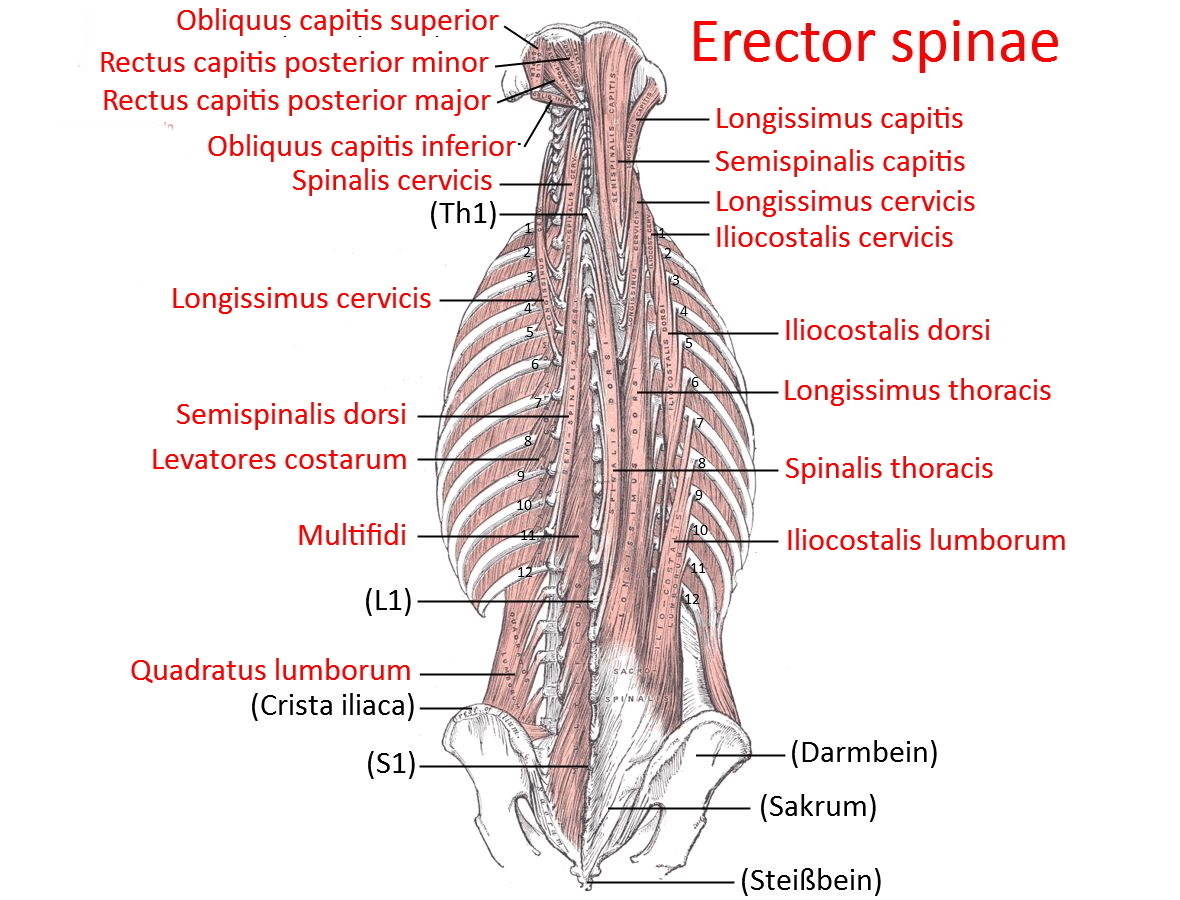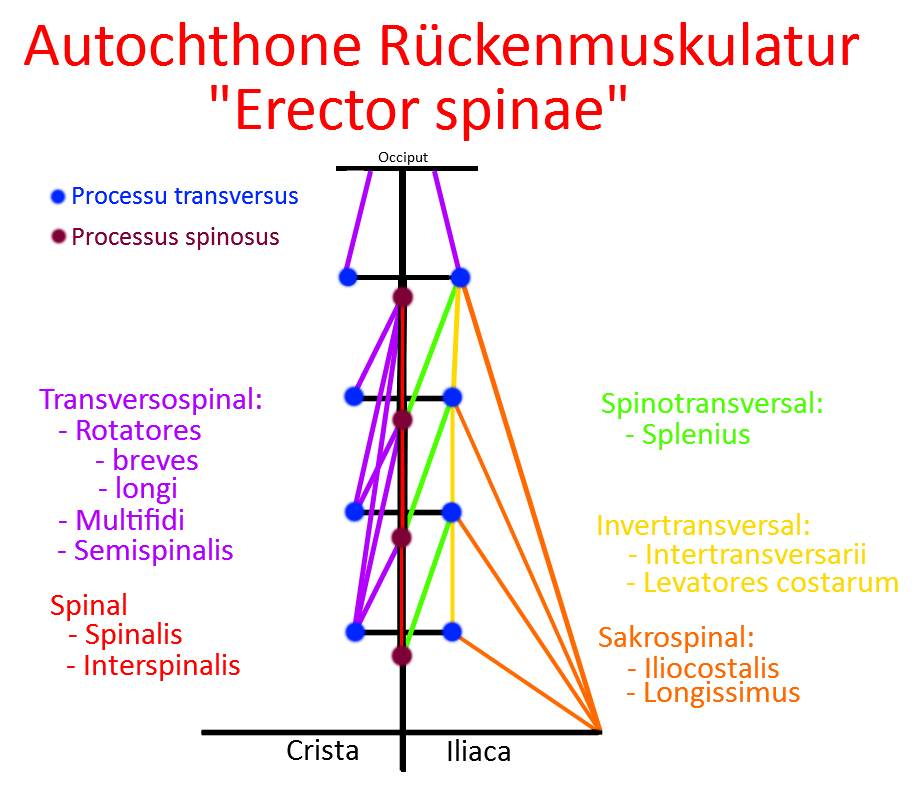yogabook / movement physiology / autochthonous back muscles

the evolutionarily oldest and only „original“ back muscles that covers all dimensions of movement (but not directions: flexion is missing) of the spine (extension, rotation, lateral flexion). It is present in a very similar form in many mammals and vertebrates and is innervated by the dorsal rami of the spinal nerves. In contrast, all other dorsal muscles are innervated muscles of the extremities and are innervated by the ventral rami of the spinal nerves. The Mm. levatores costarum can be counted as autochthonous back muscles as they are also supplied by the rames dorsales of the spinal nerves, but one can also take a different view as they are also supplied by the rames ventrales.
The autochthonous back muscles can be divided into a lateral tract (also: superficial tract) and a medial tract (also: profound tract). The lateral tract consists of:
- Intertransversal system: Intertransversarii mediales lumborum (mediales and laterales), thoracis, cervicis (anteriores and posteriores). Innervated on one side: lateral flexion; bilateral: extension
- Spinotransversal system: splenius cervicis and capitis.
Unilateral innervation: rotation of the head/spine; bilateral: lateral flexion - Sacrospinal system: longissimus thoracis, cervicis, capitis and iliocostales lumborum, thoracis, cervicis.
Innervated on one side: lateral flexion; bilateral: extension - Rib lifting muscles: levatores costarum (breves et longes): Innervated on one side: lateral flexion; on both sides: extension
The medial tract of:
- Interspinal system: interspinalis (lumborum, thoracis, cervicis), spinalis (thoracis, cervicis, capitis)
- Transversospinal system: rotatores breves et longi (lumborum, thoracis et cervicis), multifidi (lumbales, thoracici, cervicis), Semispinalis (thoracis, cervicis, capitis)

There are also the suboccipital muscles („short“ or „deep“ neck muscles):
- M. rectus capitis posterior major
- M. rectus capitis posterior minor
- M. obliquus capitis inferior
- M. obliquus capitis superior
The rectus capitis lateralis and rectus capitis anterior muscles are not autochthonous. The part of the autochthonous back muscles that rotate and simultaneously extend the spine is sometimes referred to as the oblique system; these are the transversospinal system and the sacrospinal system. The oblique system is particularly relevant, firstly because it supports other rotatory muscles of the trunk such as the oblique abdominal muscles during rotation and thus prevents the oblique abdominal muscles from having to work excessively and possibly developing excessive tone, which could make inhalation more difficult since it flexes the trunk, and secondly because many more or less pronounced combinations of flexion of the spine and rotation can be found in everyday life, starting with tying shoelaces, for example.
For more anatomical maps see here.
